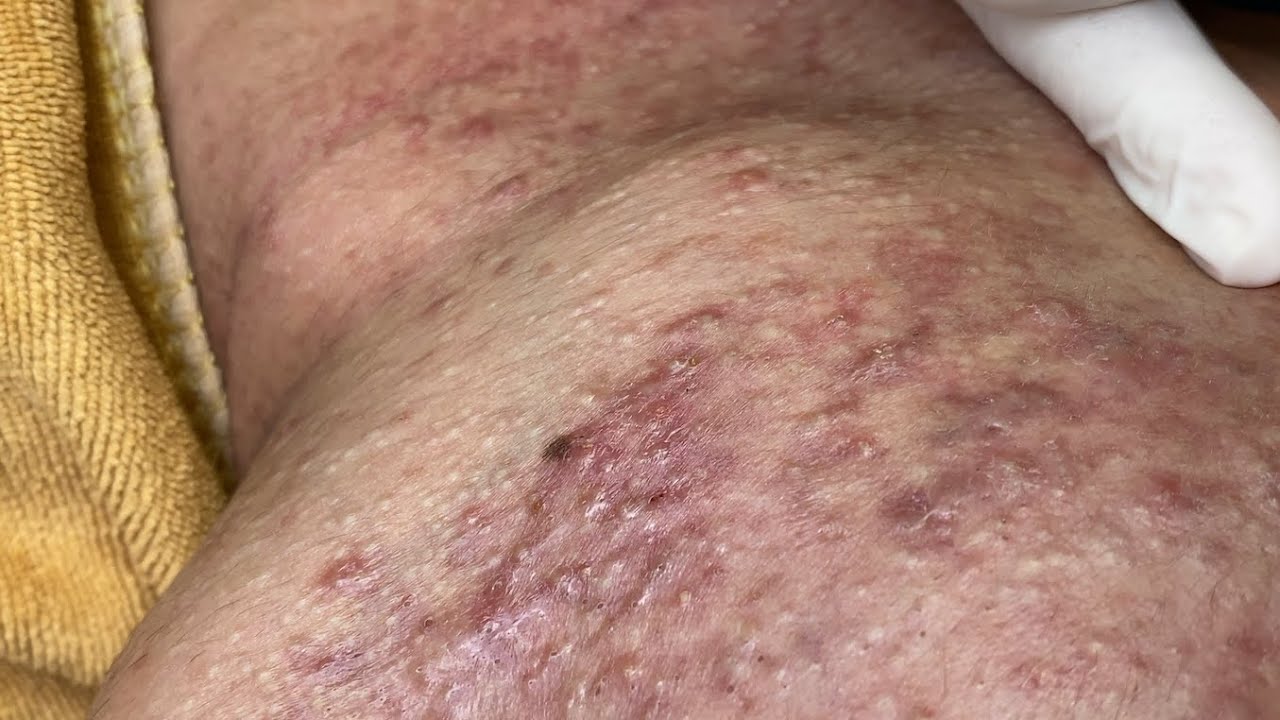Click Button Play To Watch Full Video 👇👇
Acne is a prevalent skin condition that affects millions worldwide, and its location can often reveal underlying health issues. Dermatologists emphasize that the specific areas where acne appears can provide valuable insights into hormonal imbalances, lifestyle factors, and even dietary habits. Understanding these patterns can be key to managing and treating acne effectively.
Forehead
Acne on the forehead is typically linked to stress and hormonal fluctuations. This area is part of the T-zone, which is known for higher oil production due to the abundance of sebaceous glands. Increased stress elevates cortisol levels, leading to more oil and potential clogging of pores. Additionally, using hair products or wearing hats can exacerbate forehead acne. To manage breakouts in this area, it’s essential to maintain a regular skincare routine, minimize stress through relaxation techniques, and choose hair products that are non-comedogenic.
Nose
Nasal acne often signals digestive issues or elevated stress levels. The nose contains many oil glands, making it prone to breakouts. Hormonal changes, especially during menstrual cycles, can also lead to acne in this area. A balanced diet rich in fruits, vegetables, and whole grains supports digestion and skin health. Regular cleansing and exfoliation can help keep pores clear and prevent future breakouts.
Cheeks
Cheek acne can frequently be attributed to environmental factors, such as pollution, irritants from makeup, or contact with unclean surfaces like cell phones. Additionally, it may indicate respiratory issues or allergies. To combat cheek acne, maintain a consistent skincare routine, use non-comedogenic products, and regularly clean items that touch your face. Improving air quality and reducing exposure to allergens can also be beneficial.
Chin and Jawline
Breakouts on the chin and jawline are often associated with hormonal fluctuations, particularly in women. Conditions like polycystic ovary syndrome (PCOS) can increase androgen levels, leading to acne in these areas. Diet can also influence breakouts; high sugar and dairy intake may exacerbate hormonal acne. To address chin and jawline acne, dietary modifications, stress management, and consulting a healthcare provider about potential hormonal treatments can be effective strategies.
Back and Shoulders
Acne on the back and shoulders, often referred to as “bacne,” is typically caused by friction from clothing, sweat accumulation, or hormonal changes. This area is often overlooked but can be a significant source of discomfort. To manage bacne, wear loose-fitting clothing, shower after sweating, and use specialized body washes designed to treat acne. Keeping the back clean and dry can greatly reduce the occurrence of breakouts.
Conclusion
While acne can be frustrating, understanding its location can provide valuable insights into what might be happening inside your body. From stress and hormonal imbalances to dietary choices and environmental irritants, various factors contribute to where breakouts occur. If you’re experiencing persistent acne, consulting a dermatologist is essential to identify the root causes and develop an effective treatment plan. By addressing both the symptoms and underlying issues, you can work towards clearer, healthier skin and improve your overall well-being. Knowledge of your skin’s signals is a powerful step in your journey to better health, allowing you to take informed actions toward effective acne management.
